Exploring the art of tuning the legendary 2JZ engine for both drag racing and track performance feels like unlocking a secret language between man and machine. You see, the 2JZ isn’t just any engine—it’s a powerhouse that responds beautifully when dialed in right. But here’s the catch: tuning it for a quarter-mile blast is a whole different beast than setting it up for the twists and turns of a race track. It’s not just about cranking up the boost and hoping for the best; it’s about understanding the unique demands each motorsport throws at your engine and crafting your setup accordingly.
Let’s break it down. When you’re tuning for drag racing, the focus is on explosive power and lightning-fast reaction times. You want that turbo spooling up instantly, delivering a brutal hit of torque off the line. It’s like a sprinter exploding out of the blocks—no lag, no hesitation. Quick shifts and max boost launches are your best friends here. The ECU settings must be razor-sharp to ensure throttle response is immediate and boost control is tight, preventing any hiccups that could cost you precious milliseconds.
On the flip side, track tuning demands a more balanced approach. Here, you’re playing a longer game. Power delivery needs to be smooth and predictable, allowing you to carry speed through corners without sudden surges that upset your grip. The powerband is crafted to offer flexibility—strong mid-range torque for quick exits, but enough top-end to keep your lap times competitive. Heat management and engine stress become critical factors too, since endurance means your 2JZ has to sustain performance lap after lap without breaking a sweat.
One of the trickiest parts is setting up transmission and gear ratios. In drag racing, shorter gears help you stay in the powerband for that brutal acceleration, while on the track, gear ratios are tuned to optimize traction and cornering speed. It’s a delicate balance: too short, and you’re constantly shifting; too long, and you lose out on acceleration punch.
Fuel and ignition maps also play starring roles. Drag setups often run richer fuel mixtures and more aggressive ignition timing to squeeze maximum power safely, whereas track setups prioritize consistency and engine health, dialing back timing slightly to avoid detonation during long sessions. This is where a well-tuned ECU shines, adapting boost levels by gear and controlling launch parameters to keep your 2JZ happy and healthy.
Finally, the magic happens when you start logging and analyzing data. Without it, tuning is guesswork. By reviewing boost pressure, air/fuel ratios, ignition timing, and temperatures, you can make precise tweaks that turn a good setup into a great one. Real-world case studies of 1000+ HP drag builds and time attack cars prove that attention to detail in tuning pays off big time.
In the end, tuning the 2JZ is like composing a symphony where every note counts. Whether you’re chasing the stopwatch on the strip or carving apexes on the circuit, understanding the key differences and tailoring your approach will keep your engine singing at its best.
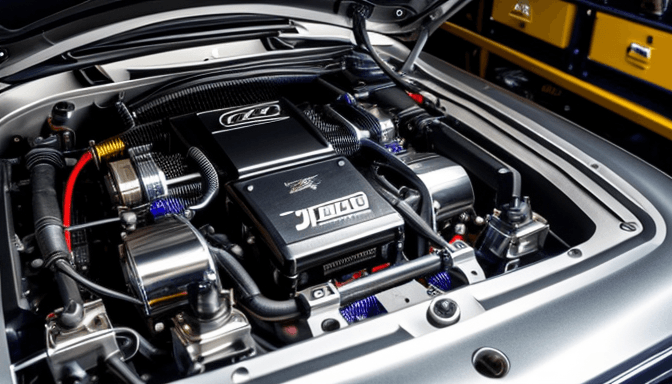
Understanding the Core Differences Between Drag and Track Tuning
When it comes to tuning the 2JZ engine, the approach you take for drag racing versus track use couldn’t be more different. Think of it like tailoring a suit: one fit for a sprint, the other for a marathon. In drag racing, the focus is all about explosive power delivery right off the line. You want that turbo spooling instantly, torque hitting hard, and the engine screaming at high RPMs in a short burst. It’s about maximizing straight-line acceleration and shaving fractions of a second off your quarter-mile time.
On the flip side, track tuning demands a more nuanced touch. The 2JZ needs to be responsive across a wider RPM range, with smooth power curves that help you out of corners and keep the car balanced through long sessions. It’s not just raw power here; it’s about engine flexibility, drivability, and endurance. You want to avoid sudden turbo lag or power spikes that might unsettle the car mid-corner. Instead, the engine should feel like an extension of your foot—predictable, steady, and reliable.
Let’s break down some of the key contrasts:
- Power Delivery: Drag setups favor a steep, aggressive torque curve that peaks quickly. Track setups prefer a flatter, broader powerband.
- Boost Levels: High boost spikes are common in drag racing for that instant hit, while track builds often use moderate, sustained boost to protect engine health.
- Throttle Response: Drag tuning cranks this up for immediate reaction, but on the track, too much sensitivity can make the car twitchy and hard to control.
- Cooling and Durability: Track engines need extra care for heat management and stress endurance, something less critical for the short bursts in drag racing.
Imagine drag tuning as a sprinter’s explosive start—everything is about that initial burst. Track tuning, however, is more like a distance runner pacing themselves, conserving energy but ready to push hard when it counts. Both require different ECU maps, ignition timing, and fuel strategies to suit their unique demands.
In short, if you try to run a drag setup on a track, you’ll find yourself fighting the car. And if you drag tune a car for the track, you’ll lose precious control and consistency. Understanding these core differences is the first step to getting your 2JZ to perform exactly how you want it—whether it’s burning rubber in a straight line or carving through corners lap after lap.
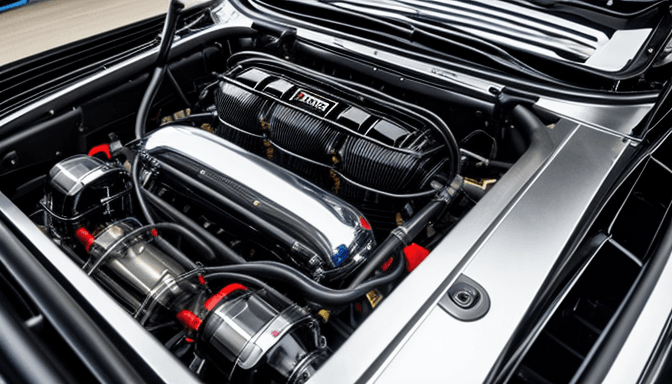
Setting Up the 2JZ for High Boost Launches and Quick Shifts
When it comes to tuning the 2JZ engine for high boost launches and lightning-fast shifts, the devil’s in the details. You want that turbocharger screaming as soon as you hit the gas, but without the dreaded turbo lag that kills your momentum right off the line. It’s a delicate dance between managing boost pressure and timing your shifts perfectly. Think of it like a sprinter exploding out of the blocks—too much hesitation, and you lose precious milliseconds; too much aggression, and you risk spinning your tires or even damaging the drivetrain.
One key trick is dialing in your boost levels so they spool up quickly but stay controlled. You don’t want the turbo to hit max boost too early and then fall off before you shift. Instead, aim for a smooth, rising boost curve that pushes power consistently through the gears. This often means tweaking the wastegate settings or adjusting the boost controller to find that sweet spot where power delivery feels like a steady shove rather than a sudden jolt.
Quick shifts are just as crucial as boost control. If your shifts are slow or sloppy, you’re bleeding speed and losing the advantage you worked so hard to build with your high boost setup. Many racers upgrade to a short-throw shifter or install a transmission controller that can cut ignition or fuel momentarily during shifts. This lets you slam through gears without grinding or hesitation, keeping the engine in its powerband and the turbo spooled up.
Here’s where the 2JZ shines—its legendary strength means it can handle aggressive launch and shift strategies if tuned right. But don’t just throw parts and settings at it blindly. Pay close attention to your clutch setup and drivetrain components; they have to withstand the sudden torque spikes from high boost launches. A worn clutch or weak driveshaft can ruin your run faster than a bad shift.
In practice, tuning for high boost launches and quick shifts means balancing:
- Boost ramp-up speed: Fast enough to build power quickly but not so fast that it causes wheel spin.
- Shift timing and smoothness: Crisp shifts that keep the engine in its optimal power range.
- Drivetrain durability: Components that can handle the shock of sudden power surges.
Imagine it like tuning a musical instrument—you want every note (or gear change) to hit perfectly on time, creating a symphony of acceleration that leaves your competition in the dust. With the right setup, your 2JZ won’t just launch hard; it’ll do so with the precision and consistency that make all the difference on the strip or the track.
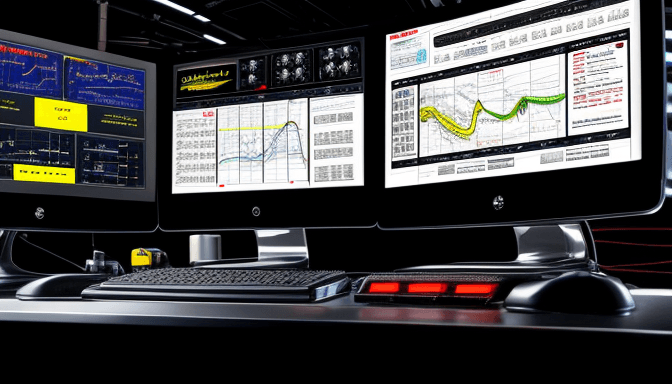
Ideal ECU Settings for Reaction Time and Boost Control
When it comes to tuning the 2JZ engine, the ECU settings are like the brain behind every move your car makes on the track or drag strip. You want lightning-fast reaction times and rock-solid boost control, but getting there isn’t just about cranking up numbers. It’s about understanding how the ECU talks to your engine and making it respond exactly when you need it to—no delays, no surprises.
Think of your ECU as a conductor guiding an orchestra. If the timing is off, even by a fraction of a second, the whole performance suffers. For drag racing, that means dialing in throttle response so the engine fires instantly the moment you hit the gas. No lag, no hesitation. This is where tweaking the accelerator pedal position sensor and throttle mapping comes into play, sharpening the engine’s reaction to your inputs.
Boost control is just as critical. You want the turbo to spool up quickly and maintain steady pressure without overshooting or causing spikes that can damage the engine. A smooth, predictable boost curve keeps your power delivery consistent and helps you manage traction off the line. Many tuners use a combination of wastegate duty cycle adjustments and closed-loop boost control strategies to keep the turbo in check.
On the track, the story changes a bit. Reaction time still matters, but you also need the ECU to adapt to varying RPM ranges and throttle positions throughout corners and straights. This means setting up flexible boost targets that shift with gear changes and engine load, ensuring you have the right power when you need it without overwhelming your tires or drivetrain.
One trick I’ve found useful is implementing boost-by-gear settings. This lets you program different boost levels for each gear, giving you more boost in lower gears for quick launches and dialing it back in higher gears to protect the engine and maintain control. It’s like having a tailored power delivery system that adapts as you race.
Finally, don’t underestimate the value of logging data during your sessions. Watching how your boost and throttle response behave in real time helps you spot inconsistencies and fine-tune your ECU settings for smoother, faster runs. It’s a cycle of constant improvement.
In a nutshell, ideal ECU settings for the 2JZ mean balancing aggressive reaction times with smart boost control. Nail this, and you’ll feel the difference the moment you hit the gas—whether you’re launching off the line or carving through a tight corner.
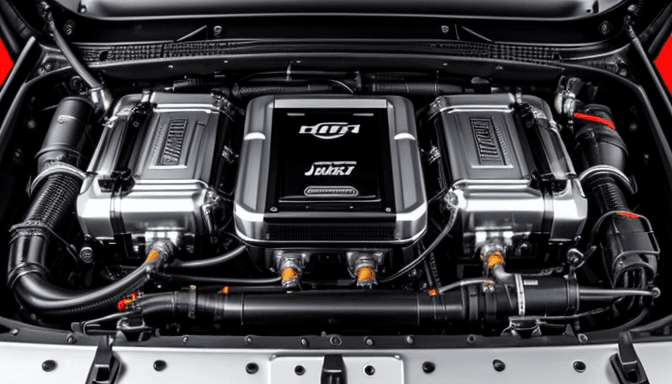
Building Powerbands for Short vs Long Track Events
When it comes to tuning the 2JZ engine, the powerband you build can make or break your race, especially when comparing short sprints to long endurance runs. Think of the powerband as the engine’s personality—it needs to match the event’s demands perfectly. For short track events, you want that punchy, aggressive power delivery. It’s like a sprinter’s burst—quick, sharp, and relentless. The engine should come alive right off the line, hitting peak torque and horsepower early to maximize acceleration. You don’t have time to wait for the turbo to spool up; every millisecond counts.
On the other hand, long track events demand a different kind of stamina. Here, the powerband needs to be broad and flexible, like a marathon runner’s steady pace. You want smooth, consistent power across a wider RPM range to keep the car balanced through corners and straights without tiring the engine. This means sacrificing some of that brutal low-end punch for a more manageable, controllable boost curve that won’t fry your components halfway through the race.
Balancing these needs isn’t just about raw numbers. It’s about how the engine responds to your inputs and the track’s twists and turns. For example, a short event powerband might favor a higher redline and aggressive ignition timing to squeeze every ounce of power. Meanwhile, a long event setup will dial back on timing and boost pressure to protect the engine from overheating and excessive wear.
Here’s a quick comparison to visualize the difference:
| Aspect | Short Track Powerband | Long Track Powerband |
|---|---|---|
| RPM Range | High RPM focus, narrow band | Wide RPM range, smoother curve |
| Boost Strategy | High boost, quick spool | Moderate boost, gradual spool |
| Ignition Timing | Aggressive for max power | Conservative for reliability |
| Torque Delivery | Sharp and immediate | Steady and manageable |
From personal experience, tuning a 2JZ for a drag strip felt like tuning a racehorse ready to bolt the moment the gate drops. Every tweak to the fuel map or ignition timing was about squeezing out that extra tenth of a second. But when I switched to a time attack setup, the focus shifted to keeping the engine cool and predictable lap after lap. It’s a different mindset, but both require patience and precision.
Ultimately, the key is understanding your event’s rhythm. Short tracks demand a powerband that hits hard and fast—like a lightning strike. Long tracks need endurance and balance—a steady flame that won’t burn out too soon. Tailoring your 2JZ’s powerband to these needs is what separates a good build from a great one.
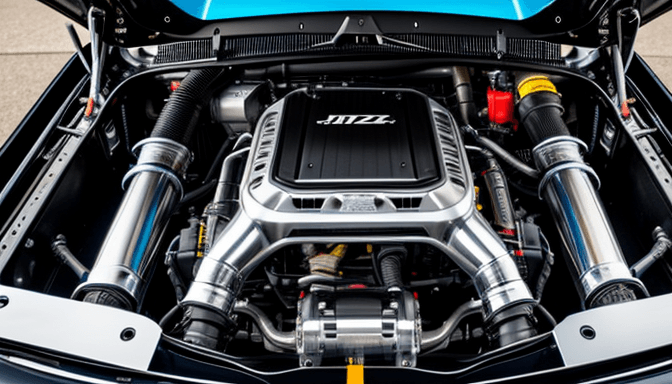
Transmission and Gear Ratio Tuning for Optimal Grip
Tuning the transmission and gear ratios for your 2JZ engine isn’t just about squeezing out more power—it’s about how that power meets the road. Imagine having a beast under the hood but slipping on ice; no matter how strong you are, traction is king. When it comes to drag racing and track performance, getting the grip right can make or break your run.
Here’s the deal: gear ratios control how your engine’s power is delivered to the wheels. If your ratios are too tall, you’ll struggle with initial acceleration, losing precious milliseconds off the line. Too short, and you might hit the rev limiter too soon, wasting power and risking mechanical stress. It’s a delicate balance. For drag racing, shorter gears are often favored because they provide explosive launches and keep the engine in its sweet spot. On the other hand, track racing demands a broader spread—enough to handle tight corners and long straights without constant shifting.
Think of it like this: gear ratios are the translator between your engine’s roar and the tires’ grip. When tuned correctly, they allow you to harness torque efficiently, minimizing wheel spin and maximizing traction. This is especially critical in high-boost 2JZ setups, where sudden bursts of power can easily overwhelm your tires if the transmission isn’t dialed in.
One trick that often gets overlooked is the role of final drive ratios. Adjusting the final drive can fine-tune overall acceleration without changing individual gear ratios. For instance, a slightly higher final drive ratio can improve off-the-line grip by increasing torque at the wheels, but it might sacrifice top-end speed. It’s all about your racing style and track layout.
Here’s a quick look at typical gear ratio setups for different scenarios:
| Racing Type | Gear Ratios | Characteristics |
|---|---|---|
| Drag Racing | Short, close ratios | Maximizes launch grip, keeps engine in powerband |
| Track Racing | Wider spread ratios | Balancing acceleration and top speed, smooth corner exits |
Don’t forget, transmission tuning also involves clutch and shift timing adjustments. Quick, smooth shifts reduce power loss and maintain momentum—critical when every millisecond counts. On the track, managing grip through gear tuning can also reduce tire wear, giving you more consistent lap times over long sessions.
In the end, transmission and gear ratio tuning is less about following a formula and more about understanding your car’s personality. Spend time testing different setups, listen to how the car responds, and adjust accordingly. That’s how you turn raw power into controlled, gripping performance on both drag strips and race circuits.
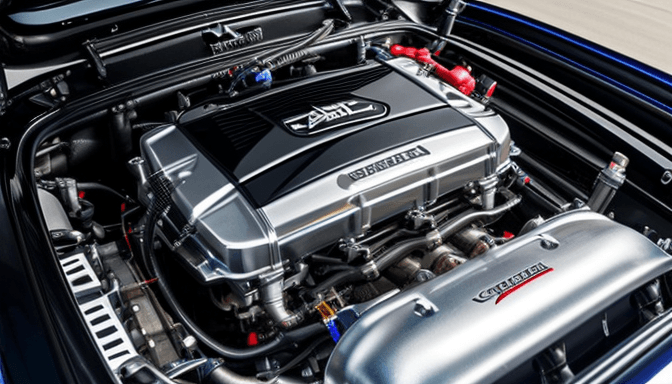
Fuel and Ignition Maps for Drag vs Circuit Environments
Fuel and ignition mapping are the heartbeat of any serious 2JZ tuning project, but they’re not one-size-fits-all. Think of these maps as the engine’s personal playlist—what works for a drag strip anthem won’t necessarily suit the flowing rhythm of a circuit race. Drag racing demands an aggressive, punchy tune that delivers instant power, while circuit racing needs a more balanced, consistent approach to keep the engine singing through every corner and straight.
In drag setups, fuel maps are often richer to support those massive, short bursts of power. You want to flood the engine just enough to keep it cool and avoid detonation during those brutally high boost launches. Ignition timing, on the other hand, is dialed in to be sharp and aggressive, pushing the combustion to happen earlier for maximum thrust off the line. But this comes with a trade-off: the engine runs hotter and under more stress, so precision is key.
Switch gears to circuit environments, and the story changes. Here, the fuel map leans towards efficiency and longevity. Instead of a rich hit, it’s about a smooth, steady delivery that keeps the engine cool over longer sessions. Ignition timing is pulled back slightly compared to drag setups, prioritizing engine safety and consistent power rather than raw explosiveness. It’s like pacing yourself in a marathon rather than sprinting a hundred meters.
To visualize this, imagine two tables side-by-side:
| Aspect | Drag Racing | Circuit Racing |
|---|---|---|
| Fuel Map | Rich mixture for cooling and power | Lean to moderate for efficiency and heat management |
| Ignition Timing | Advanced timing for explosive power | Conservative timing for engine safety |
| Boost Strategy | High, immediate boost for launch | Controlled, sustained boost for longevity |
| Engine Stress | High, short duration | Moderate, long duration |
One thing many overlook is how these maps interact with environmental factors like temperature and altitude. For example, on a hot day at the drag strip, you might need to enrich the fuel map even more to prevent knocking. On a cooler track day, ignition timing can be nudged forward slightly for better performance without risking damage.
In my experience tuning 2JZ engines, a common mistake is trying to use a drag map for circuit racing or vice versa. It’s like wearing running shoes to play basketball—they might work, but you won’t get the best results. Tailoring your fuel and ignition maps to the specific environment not only protects your engine but also unleashes its true potential. So, take a moment to think about where your 2JZ spends most of its time and tune accordingly.
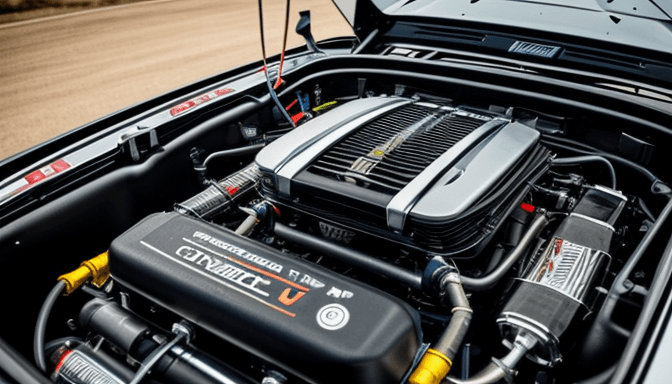
Managing Heat and Stress in Endurance Track Sessions
When you’re pushing a 2JZ engine hard over long track sessions, heat and mechanical stress become the silent enemies lurking beneath the roar of the engine. It’s not just about raw power here; it’s about keeping that power consistent, lap after lap, without the dreaded drop-off that comes from overheating or worn-out components. Imagine running a marathon in the desert — you need to pace yourself and stay cool, or you’ll burn out fast. The same principle applies to your engine.
Heat management starts with the basics: a robust cooling system. Upgrading to a high-capacity radiator, using quality coolant, and ensuring proper airflow through the front grille can make a world of difference. But don’t stop there. The 2JZ thrives on balance. Adding an oil cooler helps keep vital engine parts lubricated and running smoothly under pressure. If you’ve ever felt your engine temperature creeping up after a few hard laps, you know how quickly things can spiral.
Stress on engine components during endurance runs isn’t just about heat. It’s about how the engine is tuned and how the parts interact. Running overly aggressive ignition timing or pushing boost too high without proper fuel delivery can cause knock, which is basically the engine throwing a fit. It’s a subtle but dangerous form of stress that can chip away at your engine’s life. That’s why smart tuning, with conservative safety margins, is essential for endurance.
Let’s talk real-world tweaks. Many endurance racers dial in their boost levels to be a bit gentler than drag racers. This prevents turbo heat soak and keeps the engine running cooler over time. Launch control and boost-by-gear settings are also adjusted to avoid sudden spikes that can cause mechanical strain. It’s like easing on the gas pedal instead of stomping it — smoother inputs mean less risk of damage.
One trick I’ve seen work wonders is monitoring engine data live during sessions. Thanks to modern data loggers, you can track coolant temp, oil pressure, and exhaust gas temperatures in real time. Catching a rising trend early lets you back off and cool down before damage sets in. It’s like having a mechanic riding shotgun, always watching your back.
In essence, managing heat and stress during endurance track sessions is about respect — respect for the machine and its limits. You want to push hard, but not so hard that the engine pays the price. With the right cooling upgrades, careful tuning, and constant monitoring, your 2JZ can handle the marathon without breaking a sweat.
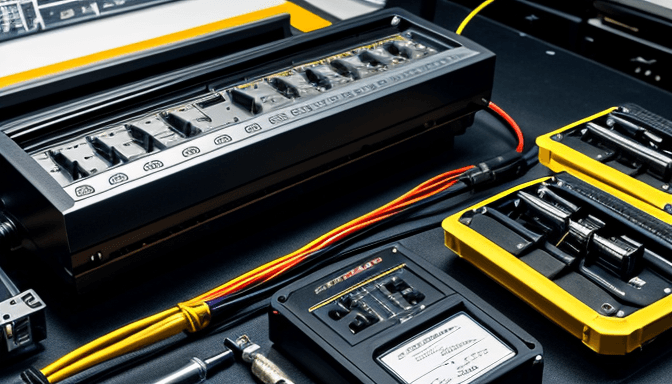
Boost-By-Gear and Launch Control Tuning for 2JZ Builds
Tuning boost-by-gear and launch control on a 2JZ engine isn’t just a tech tweak—it’s an art form that can make or break your drag or track day. Imagine trying to launch a beast with too much boost in first gear. The tires spin, you lose precious time, and frustration sets in. Too little boost, and you’re leaving power—and seconds—on the table. That’s where a smart boost-by-gear setup shines. It lets you dial in just the right amount of boost for each gear, keeping traction in check and power delivery smooth.
Here’s the deal: the 2JZ is a powerhouse, but it needs finesse. When you’re launching off the line, launch control becomes your best friend. This system holds the RPM steady so you can focus on nailing your reaction time without worrying about spinning tires or bogging down. Think of it like cruise control, but for your launch—steady, reliable, and repeatable.
Getting boost-by-gear right means you’re tailoring boost pressure to the grip and gear ratio. For example, in first gear, you might run a conservative boost to avoid wheel spin. As you shift into higher gears, you can safely increase boost since the car is already moving and traction improves. This gradual boost ramp-up keeps your 2JZ happy and your times dropping.
Launch control tuning, on the other hand, is about holding that perfect RPM and controlling boost pressure at the start. It’s a delicate balance—too high RPM, and you risk blowing the engine or losing traction; too low, and you’re sluggish off the line. The sweet spot depends on your setup, tires, and track conditions, but once you find it, consistency becomes your new best friend.
One thing many overlook is the interplay between these two systems. They’re not standalone—they work together to create a seamless power delivery experience. For instance, launch control might hold RPM at 3500, while boost-by-gear manages pressure to prevent wheelspin in first gear, then ramps up boost in second and third gears for maximum acceleration.
Here’s a quick overview of how these systems complement each other:
| System | Primary Function | Benefit |
|---|---|---|
| Boost-By-Gear | Adjusts boost pressure based on gear | Improves traction and power delivery across gears |
| Launch Control | Maintains steady RPM and boost at launch | Ensures consistent, controlled starts |
In my own experience tuning a 2JZ drag car, dialing in launch control was a game-changer. We went from inconsistent launches to hitting the same 60-foot times every run. Pair that with boost-by-gear, and the car felt glued to the track—no more wasted power or wild wheelspin. It’s not just about raw power; it’s about how you manage it.
So, if you want your 2JZ build to feel like it’s on rails off the line and through each gear, investing time in boost-by-gear and launch control tuning isn’t optional—it’s essential. It’s the difference between a car that’s just fast and one that’s fast and smart.
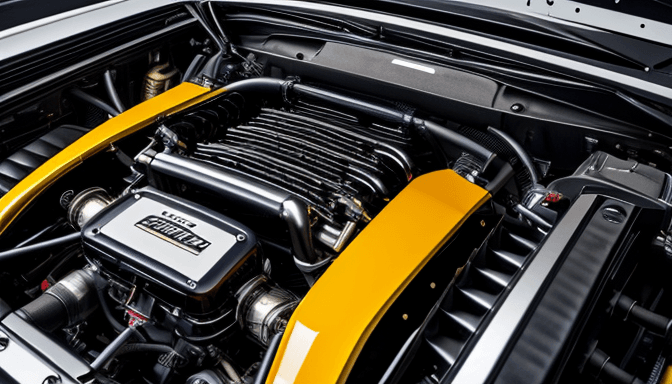
Logging and Analyzing Data for Consistent Performance
Imagine trying to improve your 2JZ engine’s performance without knowing exactly what’s going on under the hood. Sounds like shooting in the dark, right? That’s where data logging steps in as your best friend. It’s not just about collecting numbers; it’s about understanding your engine’s story. Every run, every shift, every boost spike tells you something crucial. Without logging, you’re guessing. With it, you’re making informed decisions that lead to consistent and reliable power delivery.
When you log data, you capture a wide range of parameters: boost pressure, air-fuel ratio, ignition timing, throttle position, and more. These numbers might seem overwhelming at first, but they’re gold mines once you know how to read them. For example, spotting a lean air-fuel ratio during a high-boost launch can save your engine from catastrophic failure. Or noticing inconsistent boost spikes could point to a turbo issue before it becomes a disaster on race day.
But logging is only half the battle. The real magic happens when you analyze that data. Think of it like reviewing game footage after a big match. You watch for patterns, inconsistencies, and areas to improve. Maybe your boost control is perfect in first gear but falters in third. Or your ignition timing is aggressive on short sprints but too conservative for endurance runs. These insights allow you to fine-tune your ECU settings, adjust fuel maps, or tweak your launch control strategy.
Here’s a quick snapshot of what effective data analysis can reveal:
- Throttle response delays that hurt reaction times.
- Heat spikes that could lead to engine knock or damage.
- Gear-specific boost anomalies that affect acceleration.
- Fuel delivery inconsistencies that reduce power or waste fuel.
In my own experience tuning a 2JZ for drag racing, logging helped me catch a sneaky ignition timing drop during shifts. Fixing that small issue shaved off valuable milliseconds from my quarter-mile time. It’s like having a conversation with your engine—you listen closely, learn its quirks, and respond with precision. Without this dialogue, you’re just hoping for the best.
In short, data logging and analysis are the backbone of consistent performance. They turn raw numbers into actionable insights, helping you keep your 2JZ running strong lap after lap or run after run. So, don’t just log data—study it, challenge it, and let it guide your tuning decisions. Your engine will thank you with every blistering launch and every smooth corner exit.
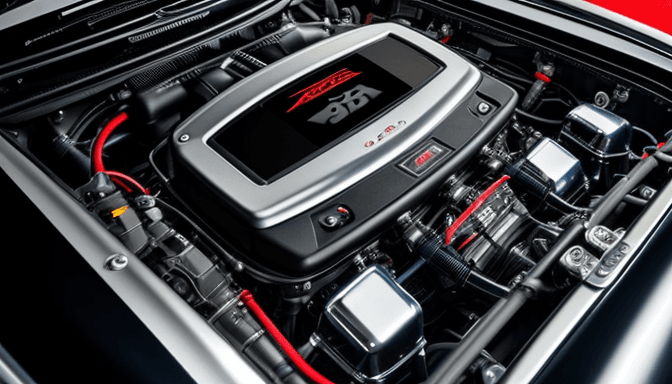
Case Studies: 1000+ HP Drag Builds and Time Attack Setups
When we talk about pushing the 2JZ engine beyond the 1000 horsepower mark, the conversation gets real—and fast. These builds aren’t just about raw power; they’re about precision, balance, and understanding the engine’s limits inside and out. Take, for instance, a drag build designed for the quarter-mile. The focus here is on explosive launches and rapid spool-up times. One standout example involves a 2JZ equipped with a massive single turbo setup, paired with a fully forged bottom end to handle the brutal forces at play. The tuning strategy emphasized a sharp, aggressive powerband, with boost-by-gear settings to keep traction in check and avoid wheel spin off the line. The ECU was dialed in for lightning-fast reaction times, with launch control calibrated to deliver consistent 60-foot times, a critical metric in drag racing.
Contrast that with a time attack setup, where the 2JZ is built to deliver sustained power over longer track sessions. Here, the tuning philosophy shifts dramatically. Instead of a brutal hit of power, the engine is mapped for a smoother torque curve that keeps the car balanced through corners and ensures drivability throughout a race. Cooling and heat management become front and center—no one wants a meltdown halfway through a session. In one notable build, a twin-turbo 2JZ was paired with custom fuel and ignition maps designed to prevent knock while maximizing mid-range torque. The transmission ratios were carefully chosen to optimize corner exit speed without sacrificing top-end power. This setup thrived on consistency rather than all-out power, proving that sometimes less aggressive tuning leads to better lap times.
Both builds highlight the importance of tailored tuning strategies. For example, the drag car’s focus on boost control and quick shifts contrasts sharply with the time attack car’s emphasis on heat management and smooth power delivery. It’s like comparing a sprinter to a marathon runner—both athletes excel, but their training and strategy couldn’t be more different.
| Aspect | 1000+ HP Drag Build | Time Attack Setup |
|---|---|---|
| Turbo Setup | Single large turbo for max spool and boost | Twin turbos for balanced power delivery |
| Powerband | Sharp, aggressive, focused on top-end power | Smooth, wide, optimized for mid-range torque |
| ECU Tuning | Boost-by-gear, launch control, quick throttle response | Fuel and ignition maps tuned for knock prevention and heat management |
| Transmission | Short, aggressive gear ratios for quick shifts | Balanced gear ratios for corner exit and top speed |
| Cooling | Standard drag cooling setups | Enhanced cooling for endurance and reliability |
These case studies prove one thing: the 2JZ engine is a blank canvas, ready to be tuned for wildly different goals. Whether you’re aiming for blistering drag strip times or consistent lap records on the track, understanding how to tweak every element—from ECU settings to gear ratios—makes all the difference. It’s not just about building power; it’s about building the right power for the job. And trust me, when you get it right, the results don’t just show up on paper—they explode off the line and carve through corners like a knife through butter.
Frequently Asked Questions
- What’s the main difference between tuning a 2JZ for drag racing versus track performance?Great question! When tuning for drag racing, the focus is on explosive power and quick launches—think high boost levels and short, aggressive powerbands. For track performance, it’s all about smooth power delivery, balanced torque curves, and endurance, ensuring the engine stays reliable through long, demanding sessions.
- How do I optimize boost and shifting for a high boost launch on the 2JZ?To nail a high boost launch, you want to fine-tune your boost controller and launch control settings to build pressure quickly without turbo lag. Pair that with quick, precise shifts—usually by adjusting your transmission’s shift points and firmness—to keep the power flowing uninterrupted off the line.
- Why are ECU settings so critical for reaction time and boost control?The ECU acts like the brain of your engine. Proper tuning here sharpens throttle response and manages boost pressure dynamically, which means faster reaction times and consistent power delivery whether you’re smashing the drag strip or hustling through track corners.
- How do powerbands differ for short sprints versus long track events?Short sprints demand a powerband that peaks quickly and delivers maximum torque upfront, giving you that instant punch. For longer track events, you want a broader, smoother powerband that balances horsepower and torque to avoid burnout and maintain speed over time.
- Can adjusting gear ratios really improve grip and acceleration?Absolutely! Tweaking your gear ratios can dramatically affect how your tires hook up with the surface. Shorter gears help with quick launches and better grip off the line, while longer gears can optimize top-end speed and smooth corner exits on the track.
- What’s the difference between fuel and ignition maps for drag versus circuit racing?Drag racing maps prioritize maximum power and aggressive ignition timing, often pushing the engine to its limits in short bursts. Circuit maps focus on engine safety and consistency, with smoother fuel delivery and conservative ignition timing to handle heat and stress over longer runs.
- How do I manage heat and stress during long endurance track sessions?Managing heat is like keeping your engine’s cool under pressure. Use cooling upgrades, monitor temps closely, and adjust ignition and fuel maps to prevent detonation. This keeps your 2JZ running strong without overheating or mechanical failures during those marathon races.
- What is boost-by-gear and why is it important for 2JZ builds?Boost-by-gear lets you control turbo boost differently depending on which gear you’re in. This means you can dial back boost in lower gears to prevent wheel spin and ramp it up in higher gears for maximum power, balancing traction and acceleration perfectly.
- How does data logging help improve 2JZ tuning?Think of data logging as your engine’s diary—it records vital stats like boost, fuel trims, and ignition timing. Analyzing this data helps you spot trends, catch issues early, and fine-tune settings for consistent, repeatable performance every time you hit the track or strip.
- Can you share examples of successful 1000+ HP 2JZ builds for drag and time attack?Definitely! There are builds out there pushing over 1000 horsepower, tailored specifically for drag racing with crazy high boost and quick-shift transmissions, and others optimized for time attack featuring balanced powerbands and endurance tuning. These case studies are gold mines for learning how to push your 2JZ to its limits safely.